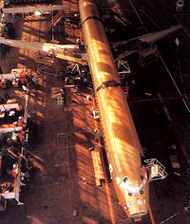Looking for more insights?
Sign up to stay informed about our latest article releases.
With its decision earlier this year to relaunch its large aircraft program, China has signaled its intent to challenge Boeing and Airbus SA’s dominant positions in the global market. On February 26, the Chinese government announced its approval of the program and a future company to operate it. The news is a strong signal that, despite unsuccessful efforts in the 1980s, China sees the benefits of developing large aircraft, including the impact this will have on other industries, such as machinery, electronics, metallurgy, chemicals, energy and IT. What are the driving forces for this program and what will the new venture look like? China Knowledge at Wharton interviewed experts for their opinions on the challenges that lie ahead.

Sign up to stay informed about our latest article releases.